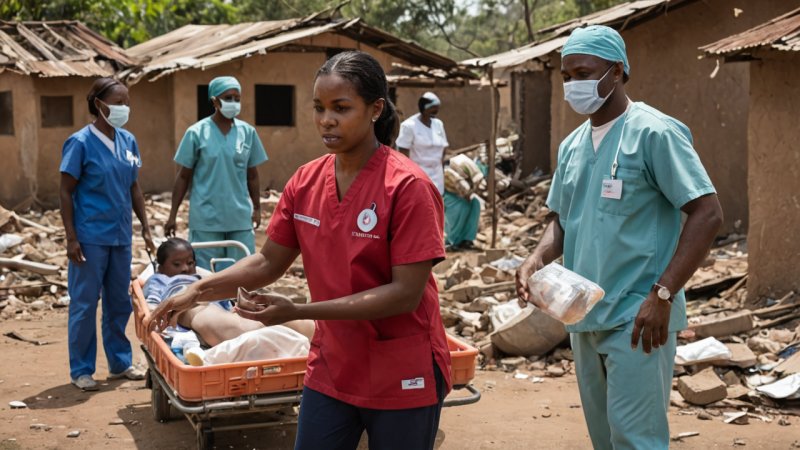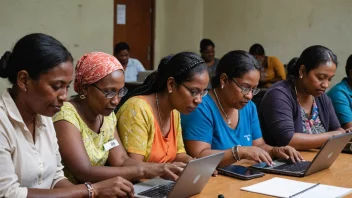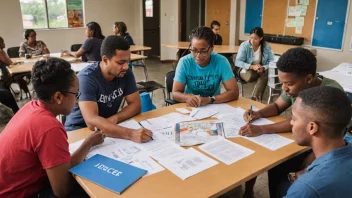In the wake of disasters—be they natural calamities like earthquakes, floods, or man-made crises such as conflicts and pandemics—the public health sector plays a pivotal role in mitigating suffering and restoring communities. The intersection of public health and disaster relief is a critical area of focus for humanitarian organizations, government agencies, and communities striving to rebuild lives. This article aims to explore the multifaceted significance of public health in disaster relief, highlighting its impact on health outcomes, the essential services it provides, and the collaborative efforts necessary for effective response.
Understanding Public Health and Its Role in Disasters
Public health encompasses the science and art of preventing disease, prolonging life, and promoting health through organized efforts of society. In disaster scenarios, public health becomes even more crucial as the challenges of ensuring safety, health, and wellbeing multiply. The immediate aftermath of a disaster often leaves communities vulnerable to outbreaks of infectious diseases, mental health crises, and lack of access to essential health services.
Immediate Health Risks Following a Disaster
Disasters can lead to a range of health risks including:
- Infectious Diseases: Flooding, for instance, can contaminate drinking water supplies, leading to outbreaks of diseases such as cholera and typhoid.
- Mental Health Issues: Survivors may experience anxiety, depression, and post-traumatic stress disorder (PTSD) due to loss and trauma.
- Chronic Disease Management: Individuals with chronic conditions may lose access to medications and healthcare services.
Public Health Strategies in Disaster Relief
Effective disaster relief hinges on the implementation of robust public health strategies. These strategies can be categorized into several key areas:
1. Surveillance and Monitoring
Establishing a system for monitoring health trends is imperative during disaster relief. This includes:
- Data Collection: Gathering information on health conditions, disease outbreaks, and the status of health services.
- Real-Time Analysis: Utilizing technology to analyze data and predict potential health crises.
2. Emergency Medical Services
Providing immediate medical care is a fundamental aspect of public health in disaster relief:
- Mobile Clinics: Deploying mobile health units to reach affected populations quickly.
- First Aid and Triage: Training volunteers and community members in basic first aid and triage to manage injuries effectively.
3. Health Education and Promotion
Educating communities about health risks and preventative measures can significantly reduce disease transmission:
- Sanitation Practices: Promoting hygiene and sanitation to prevent waterborne diseases.
- Mental Health Awareness: Providing resources and support for mental health issues.
4. Collaboration with Local Entities
Collaborating with local health authorities and organizations can enhance the effectiveness of disaster response:
- Community Involvement: Engaging local leaders and health workers ensures that relief efforts align with community needs.
- Resource Sharing: Local entities often have valuable knowledge about the affected population and available resources.
Case Studies: Successful Public Health Initiatives in Disaster Relief
Examining real-life examples can provide insights into effective public health strategies in disaster settings:
1. The 2010 Haiti Earthquake
After the devastating earthquake in Haiti, public health initiatives focused on:
- Cholera Prevention: Rapid response teams were deployed to provide clean water and sanitation to prevent cholera outbreaks.
- Mental Health Services: Community-based programs were established to address the mental health needs of survivors.
2. Hurricane Katrina
In the aftermath of Hurricane Katrina, public health efforts included:
- Vaccination Campaigns: Vaccination drives were organized to prevent outbreaks of diseases.
- Community Health Workers: Local volunteers were trained to provide health education and support.
The Importance of Capacity Building in Public Health
Capacity building within communities is essential for long-term resilience against disasters. This involves:
- Training Local Health Workers: Investing in training programs ensures that communities have skilled personnel to respond to health emergencies.
- Establishing Local Health Infrastructure: Strengthening health systems can enhance the ability to cope with disasters in the future.
Challenges Facing Public Health in Disaster Relief
Despite the critical role of public health, several challenges can hinder effective response:
- Funding Limitations: Insufficient funding can restrict the scope of public health initiatives.
- Coordination Issues: Multiple organizations may lead to overlapping efforts and confusion in response strategies.
- Cultural Barriers: Culturally sensitive approaches are necessary to ensure community buy-in and participation.
How Individuals Can Contribute to Public Health in Disaster Relief
Individuals can play a vital role in supporting public health efforts during disasters:
- Volunteering: Join local organizations focused on disaster relief and public health.
- Education: Raise awareness about the importance of public health in your community.
- Advocacy: Advocate for policies that support public health initiatives in disaster-prone areas.
Conclusion
The significance of public health in disaster relief cannot be overstated. It serves as the backbone of effective response strategies, ensuring that communities receive the care they need in times of crisis. By prioritizing public health, we can not only save lives but also empower communities to recover and rebuild. As individuals, we hold the potential to make a difference by getting involved, advocating for health initiatives, and supporting the resilience of affected populations. Together, we can create a world where health and wellbeing are prioritized in every disaster response, paving the way for a more just and equitable society.






